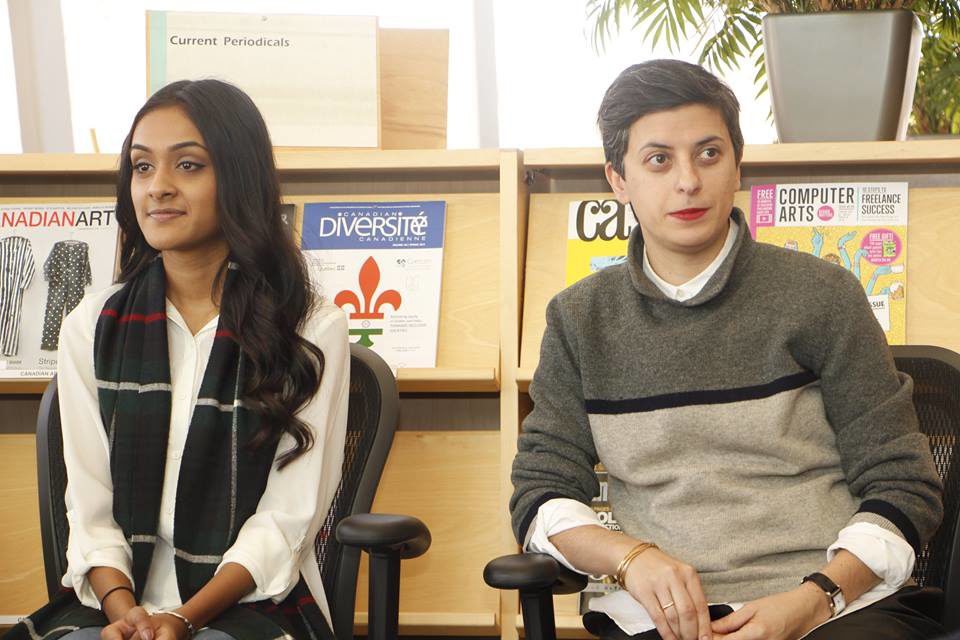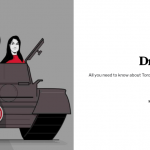How two Centennial College journalists contributed to “Silent No More”
What kind of journalism is it when the subjects of the story become a part of the telling?
[[{“fid”:”3851″,”view_mode”:”default”,”fields”:{“format”:”default”,”field_file_image_alt_text[und][0][value]”:””,”field_file_image_title_text[und][0][value]”:””},”type”:”media”,”link_text”:null,”attributes”:{“height”:”640″,”width”:”960″,”style”:”width: 300px; height: 200px; margin-left: 10px; margin-right: 10px; float: right;”,”class”:”media-element file-default”}}]]By Marwa Mohkam Sheikh
We are in a privileged position as journalists. We bridge the gap between bodies of authority and the public, and it is our duty to report on the circumstances and individuals that surround us. But what happens when we deviate from these norms? What kind of journalism is it when the subjects of the story become a part of the telling?
Sarah Boesveld, a features writer for the National Post, along with photographer Tyler Anderson, Centennial College journalism students Samira Mohyeddin and Jennifer Lee and Centennial journalism professor Noreen Ahmed-Ullah are in a fitting position to answer these questions.
In mid-February, the National Post published an innovative and inspiring feature entitled “Silent No More” that focuses on the pressing issue of violence against indigenous women in Canada. In this unique project, these four journalists partnered with Maples Collegiate Institute, a school in Winnipeg, and set up a four-day photojournalism workshop for 12 indigenous teens. Not only would they teach storytelling through photos, they would also listen to these girls’ personal stories about what it’s like being a young Aboriginal woman in times of such distress.
The staggering figure of 1,200 missing and murdered women is made real by these 12 girls and their stories. It puts faces and names and personalities to an otherwise abstract phenomenon.
The result has been fantastic.
I know this not just because of the quality of the work, but because on Feb. 25 these journalists had a panel discussion on the project in the library of Centennial College’s Story Arts Centre in Toronto. As a student in the journalism program here, I was particularly encouraged by what my classmates had to say.
“I don’t know if I was really prepared for what I was going into, in terms of hearing their stories,” Mohyeddin said. “We knew that we have to sort of be vulnerable in order for them to open up so we decided to tell stories of our own in order to let them know that it’s safe for them to open up also,” she said.
The journalists shared various aspects of covering this story, but perhaps the most important theme of this project was the concept of power and agency for these young girls. “Indigenous women have been largely ignored and spoken about in a very demeaning and dismissive way,” Boesveld said.
This is why the girls were withdrawn at first. By telling this story, especially in the form of personal profiles for each of these girls though, these journalists put the power of narrative into their hands.
This is a new dimension of storytelling; letting individuals create their own narratives. Ahmed-Ullah, who reported for the Chicago Tribune for 15 years, stressed that the goal was to tell the most compelling story “without victimizing the girls once again, because that’s what you don’t want to do. This is a chance for their voices to be heard so you don’t want them to be a victim again.”
The team, however, did face challenges.
[node:related][[{“fid”:”3852″,”view_mode”:”default”,”fields”:{“format”:”default”,”field_file_image_alt_text[und][0][value]”:””,”field_file_image_title_text[und][0][value]”:””},”type”:”media”,”link_text”:null,”attributes”:{“height”:”640″,”width”:”960″,”style”:”width: 300px; height: 200px; margin-left: 10px; margin-right: 10px; float: right;”,”class”:”media-element file-default”}}]]Mohyeddin and Lee were especially vocal about what they struggled with, considering the magnitude of this story.
Mohyeddin shared that she was afraid of becoming a part of the problem; she didn’t want to just fly in, get these girls’ stories and leave.
“I felt like I was being manipulative and I felt guilty at times over that week,” she said. Seeing the girls’ response to it “dissipated” that for her because she realized that the girls wanted to talk.
The journalists were surprised by how much the girls ended up sharing with them.
“We opened Pandora’s box,” Ahmed-Ullah said.
“It was really hard, hearing all these stories,” Lee said. The experience took her straight from the classroom and into the field. “For me, just being there and being immersed in that was a whole other aspect of it that I hadn’t really embraced before,” she said.
I am inspired not just by the fact that these journalists empowered young women to be heard and seen, but also by the honest way in which they spoke about how they struggled to achieve this. The entire team was open about its biggest challenge, which was balancing the role between being a reporter and a compassionate human being.
Mohyeddin and Lee said that they learned a lot from watching Boesveld and Ahmed-Ullah in the field. In fact, the entire group had no qualms about sharing how much support they got from each other, and how it was everyone’s different perspectives that made the story what it is.
For aspiring journalists, Mohyeddin and Lee gave some motivating advice at the end.
“Don’t sell yourself short and think that just because you’re a young journalist, you can’t be covering these big stories,” Lee said. “You can do these amazing things that you’ve always wanted to do. Just do what you can to the best of your abilities.”
Mohyeddin spoke to everyone trying to do something in this world. “When opportunities come, take them,” she said. “You never know what’s going to come out of it.”
Photos by Sanjeev Wignarajah.
Marwa Mohkam Sheikh is a third-year international student in the joint journalism program between University of Toronto and Centennial College.




